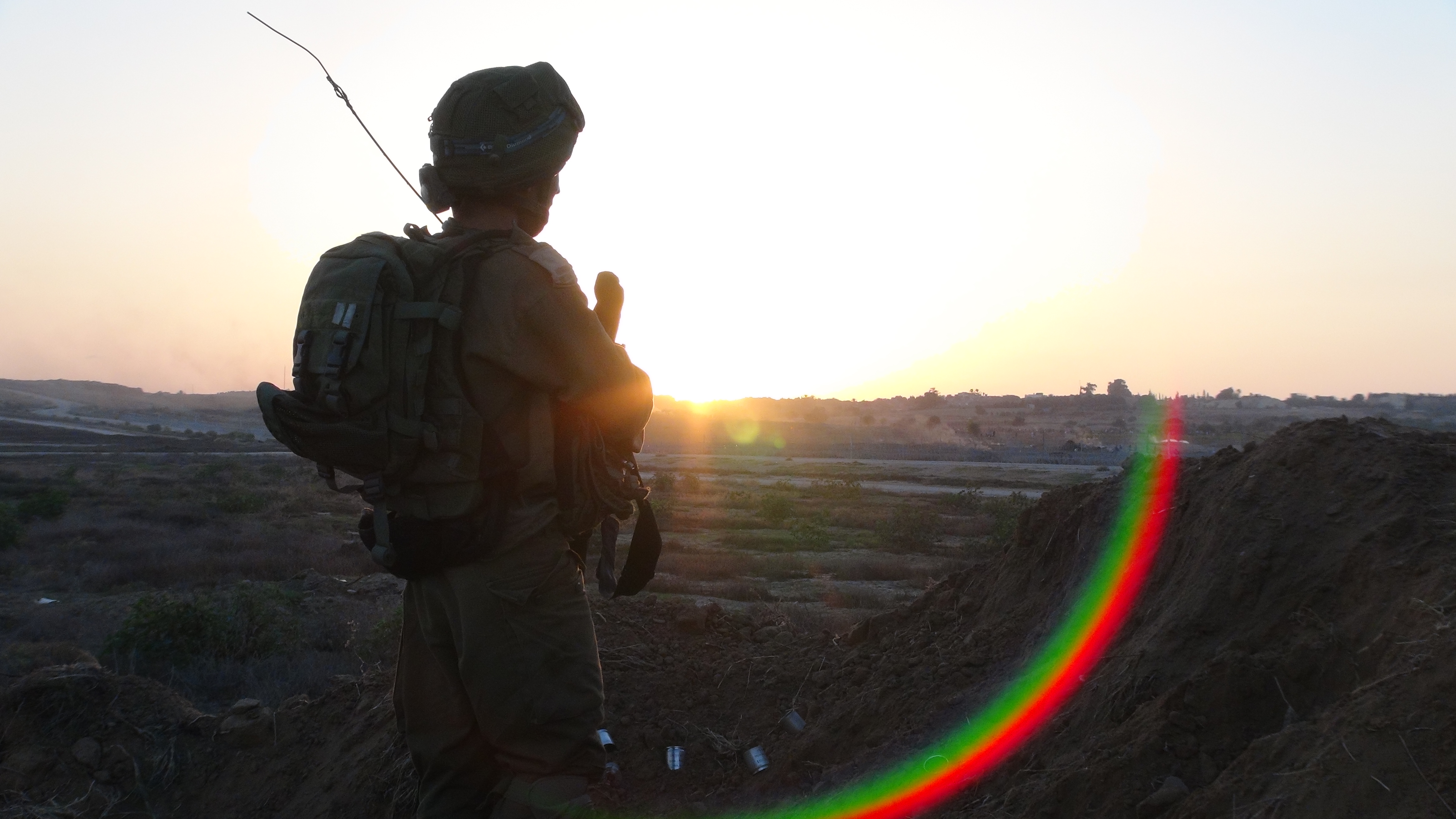The Hamas rocket that shattered a village home in the Sharon district of central Israel, north of Tel Aviv early on Monday morning, is an attack that for Israeli leadership represents a step too far.
Eleven days after Hamas fired two rockets in the direction of Tel Aviv—in what it claimed was “an accidental” maintenance error—this time, it appears as if the organization’s addiction to gambling and upping the ante to extract concessions from Israel has led it to commit a serious mistake, one that will come with punishing repercussions.
No Israeli leadership can ignore the fact that seven Israeli civilians were injured in the rocket strike, including six members of a single family, who narrowly escaped a fate far worse that injury in the surprise attack. The latest incident has further dented Israelis’ sense of security, as well as Israeli deterrence against its enemies.
For the past year, Hamas leader Yahya Sinwar has used “controlled violence” tactics, like border rioting, planting bombs along the Gazan-Israeli border and sending explosives over the border attached to kites and balloons. The goal has been to pressure Israel, Egypt and the international community to allow more international funds into Gaza, as well as agree to demands for a seaport, more trade with the outside world, investment in infrastructure and job-producing projects.
Such measures would allow Hamas to avoid an internal rebellion by Gazans. The Gazan population has been made desperate by its deteriorating economic situation and lack of hope for improvement on the horizon—conditions created by Hamas’s policy of turning the Gaza Strip into an isolated terrorist-military base sponsored by Iran.
Monday’s rocket had a range of more than more 75 miles, and according to assessments by the Israel Defense Forces, it was manufactured in Hamas’s domestic arms factories. It was launched from a Hamas position in Rafah in southern Gaza.
The military would not officially discuss its intelligence assessments regarding the calculations that guided those firing it or get drawn into responding to claims from Gaza that once again, someone fired a long-range projectile into Israel “by accident.”
Instead, the IDF got busy preparing itself and southern Israel for a significant response.
That response started on Monday evening local time, with the IDF striking Hamas targets throughout the Gaza Strip.
Earlier, the military deployed two additional infantry and armored corps conscripted brigades to the IDF’s Southern Command and conducted a limited call-up of reserves—at least, for now—mainly for air defenses.
“We are ready for all contingencies,” a defense source told JNS.
The IDF’s Gaza Division also closed off whole areas and roads in the south that are near the Gazan border, and ordered Israeli farmers to in the area to stop working their land.
All of the signs indicate that a significant Israeli military retaliation is in the works.
Usually in such cases, the Israeli General Staff draws up a range of options and the Israeli cabinet chooses one of them.
What remains unknown at this time is how extensive Israel’s military action will be and how Gaza’s terrorist factions will, in turn, respond. The escalation dynamic remains unknown.
The answers to such questions will in large part determine whether the region is about to enter a brief, yet intensive, exchange of fire, or whether the situation might escalate into a wider conflict that could even include a ground offensive.
Another question that the Israeli cabinet will need to answer is whether, after all is said and done, it will wish to leave the Hamas regime in power and limit its strikes to the military wing, or go further and strike at the regime’s survivability.
Israel’s dilemma, ever since Hamas seized power in a violent coup in 2007, has been whether to choose a hostile radical Islamist regime—yet one that is capable of ruling Gaza and has been partially responsive to deterrence—or to topple the regime. Hamas is fully aware of Israel’s deep reluctance to reoccupy Gaza and its aversion to the scenario of getting “stuck in the Gazan mud,” an awareness it has used to keep gambling and pressuring Israel.
In recent weeks, the new IDF Chief of Staff, Lt. Gen. Aviv Kochavi, has ordered the military’s Southern Command to review its attack plans and ensure they are up to date. Kochavi also told a new Military Intelligence targeting center to prioritize the collection of intelligence on enemy targets in Gaza. These steps are part of his keen awareness that Gaza remains the most unstable arena in Israel’s neighborhood and the one that is most likely to explode first.
The IDF will also need to factor in the risk of Gaza setting off other arenas, particularly the West Bank, and even also northern fronts.
Finally, as some in the Israeli defense establishment have been pointing out, military force is an essential but not exclusive tool to deal with Gaza. Sooner or later, the Strip’s economic and infrastructure woes will require treatment or the next escalation that follows this one will not be far away.









